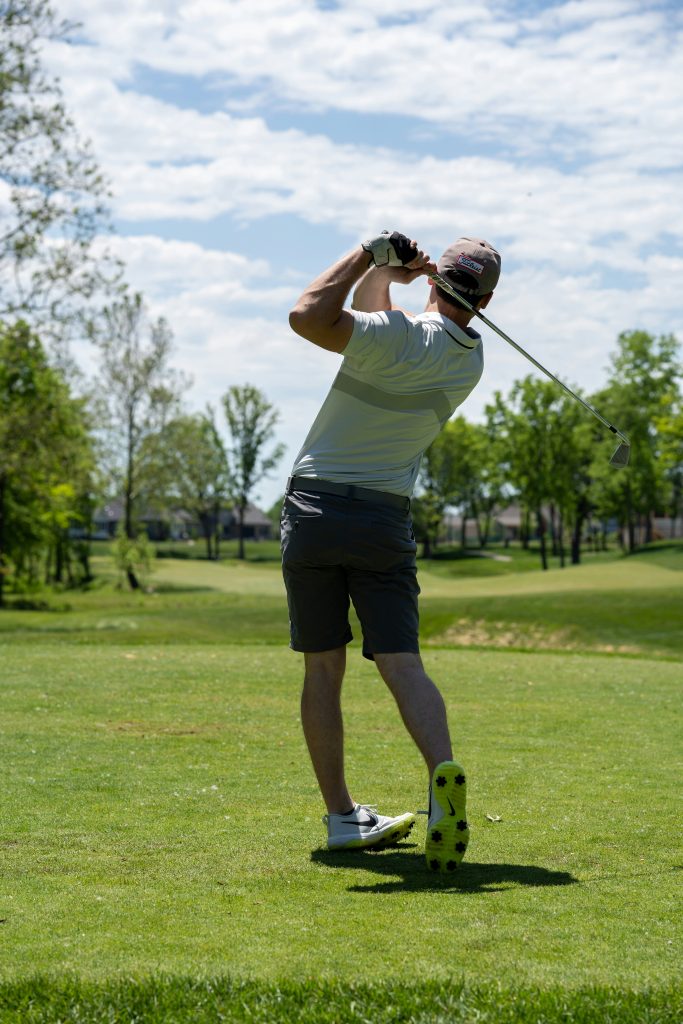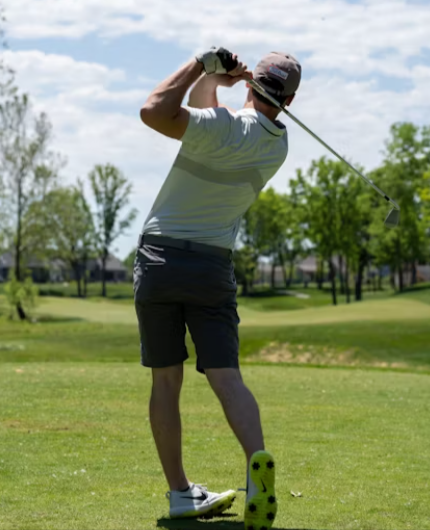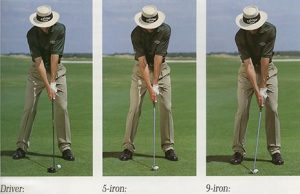Have you ever found yourself pondering the mechanics of a seemingly simple yet profoundly intricate game? Golf, with its centuries-old traditions, presents a plethora of techniques, each carrying its own lore and science. Among these numerous techniques, one focal point for players is the positioning of the hands when hitting irons. The query prompting reflection is simple: should your hands be ahead of the ball when hitting irons?
Understanding the Basics of Iron Play
Grasping the fundamental aspects of hitting irons is vital for any player aiming to improve their game. Irons serve a versatile role in golf, used primarily for shots where both precision and distance control are crucial. These clubs lie in the spectrum between woods and wedges and are often categorized from long irons to short irons based on their length and loft.
The Role of Irons in Golf
In golf, irons are numbered between 3 and 9, complemented by the pitching wedge and other wedge variations. Lower-numbered irons (such as 3, 4, and 5) have less loft, facilitating longer shots, whereas higher-numbered irons (such as 7, 8, and 9) offer more loft to allow shorter, more precise shots. This versatility makes them indispensable when navigating various terrains on the golf course.
Importance of Hand Positioning
Hand positioning influences the angle and trajectory of the shot. When discussing whether hands should be ahead of the ball, it’s crucial to understand this influence. Proper hand alignment ensures that the clubface meets the ball at the right angle, which affects the spin, direction, and distance of the ball.
Mechanics of the Golf Swing
To comprehend why hand positioning is often debated, understanding the mechanics of the golf swing is essential. The swing sequence, though fluid and swift, involves distinct stages: setup, backswing, downswing, and follow-through.
The Setup and Alignment
The setup is arguably the most critical phase in establishing a successful swing. It involves posture, stance, and alignment. Proper alignment means your feet, hips, and shoulders are parallel to the target line, while the ball position alters slightly based on the iron number. The centricity of the stance and the ball’s position relative to your feet influence how the swing unfolds, particularly where your hands should be at impact.
The Backswing and Downswing
In the backswing, the club moves away from the ball until it reaches the top of the arc. This stage is foundational for storing energy like a coiling spring. As you transition into the downswing, this stored energy is released. The power generated should flow smoothly down to the ball, dictating the speed and accuracy of the shot. The transition from backswing to downswing is crucial, as this is the phase where hand position can begin to shift relative to the ball.
Impact and Follow-Through
Impact is the moment when the clubface meets the ball. It is here that hand positioning becomes a topic of debate. The ideal impact position generally involves having the hands slightly ahead of the ball when making contact with the irons. This forward positioning aids in compressing the ball against the clubface, ensuring optimal launch and spin.
Post-impact, the follow-through sees the clubhead rising and completing the swing arc. A well-executed follow-through is indicative of a balanced and effective swing, often pointing directly at the target line.

Analyzing the Argument: Hands Ahead of the Ball
The discussion on placing your hands ahead of the ball centers around control and contact. While it’s common advice, understanding the rationale and physics behind it helps clarify its benefits and potential drawbacks.
Benefits of Hands Ahead
Positioning your hands ahead of the ball can lead to more controlled, crisp contact. This alignment helps in several ways:
- Better Ball Compression: By having your hands slightly ahead, you ensure the clubface contacts the ball with a descending blow, leading to better compression and control. This results in a more penetrating ball flight.
- Decreased Risk of Flipping: When hands trail behind the ball, it often causes the clubhead to flip over and thus lose control. Keeping hands ahead helps maintain control of the clubface.
- Predictable Spin and Trajectory: The desired spin and trajectory become easier to repeat when the hands consistently lead the clubhead through impact.
- Improved Distance Control: Compression and sequence lead to a more consistent energy transfer from club to ball, improving distance control.
Potential Challenges
While beneficial, adopting this hand position comes with certain challenges. Overemphasizing forward hand position can lead to mishits if not executed properly:
- Timely Release: The player must correctly time the release of the clubhead; otherwise, the shot could lose accuracy.
- Risk of a Steeper Swing: An exaggerated forward hand position can make the swing too steep, increasing the risk of hitting the ball fat (turf first contact) or thin (minimal ground contact).
- Overcompensation: Some players might excessively shift their weight forward to complement the hand position, leading to a loss of balance.
Key Techniques and Drills
Improving your striking ability involves refining your technique, and practicing certain drills can be instrumental in achieving this.
Techniques for Mastering Hand Position
Grasping several techniques can assist in the correct adjustment of your hand positioning:
- Neutral Grip: Start with a neutral grip to help the wrists work naturally through impact. This aids in allowing the hands to position slightly ahead as you hit.
- Ball Position Adjustment: Depending on which iron you use, adjusting the ball’s position relative to your stance can allow your hands to naturally be in the right place at impact.
- Weight Transfer: Focus on maintaining a balanced weight transfer during your swing. Initiating the downswing with your lower body can assist in moving the hands in front as you make contact with the ball.
Drills for Consistent Practice
Practicing certain drills can enhance your understanding and execution of the ideal hand position during your swing:
Alignment Rod Drill
Place an alignment rod on the ground, angled slightly back from your target line, and parallel to your shaft angle at setup. Practice hitting shots while ensuring that your hands are aligned with or ahead of the rod at impact, promoting forward shaft lean.
Towel Drill
Place a towel under your armpits while practicing half swings. This exercise helps you maintain a connection between your arms and body, ensuring the proper forward position of your hands through impact.
Coaching Insights and Professional Advice
You are rarely alone in your quest to refine your golf swing. Many professionals and coaches have emphasized this particular aspect as essential for effective iron play.
Insights from Experienced Golfers
Professional golfers emphasize that maintaining a forward hand position harmonizes with the natural forces at play during a swing. They observe how the body’s weight distribution and swing arc support this position, lending consistency and accuracy to their shots.
Common Myths Debunked
Several myths about hand position can often mislead players:
- Myth: Hand position alone determines shot quality.
- Reality: While significant, hand position is one of several swing factors, including grip, alignment, and clubhead speed.
- Myth: Holding hands ahead of the ball suits every player.
- Reality: Individual swing styles and biomechanics influence what works best, requiring personal experimentation or tailored coaching to find the optimal position.
The Impact of Equipment on Hand Position
Modern golfing technology has transformed how players of various skill levels approach their game. Equipment, including the design and weight of irons, can significantly influence swing mechanics.
Technological Advancements in Irons
Contemporary iron design, such as cavity back and perimeter weighting, aids golfers in achieving better launch and distance—even on mishits. The engineering behind these clubs factors into how a player should set their hands relative to the ball.
Equipment Customization
Custom fitting allows for adjustments to lie angles, shaft length, and grip size. These modifications optimize hand positioning and club performance for a particular player’s swing style and physical characteristics.
Conclusion: Determining What’s Best for You
Ultimately, gauging whether your hands should be ahead of the ball when hitting irons demands a blend of tried-and-true fundamentals and personal nuances. While the general principles of golf suggest that such positioning aids with trajectory, control, and consistency, it remains essential to tailor this approach to your individual swing style and preferences.
Striving for Improvement
Improvement is the shared goal in golf, demanding dedication, insight, and adaptability. Engaging with drills, embracing modern equipment, or seeking professional coaching can enhance your understanding and proficiency with iron play.
Balancing Guidance and Personal Experience
While this article provides foundational insights, personal experience and experimentation are powerful tools. As you refine your technique, remain flexible to adapt as you discover what truly amplifies your abilities on the course.
Whether you adopt or adapt the practice of positioning your hands ahead of the ball, remember that every golfer’s journey is unique, much like the flight of a well-struck ball: ever-evolving and boundless in potential.

Ed Baucom is a passionate and dedicated golfer with years of experience both on and off the course. Known for his insightfulness and attention to detail, Ed brings a wealth of knowledge to the golfing community, particularly through his reviews for Golf Aid Advisor. His expertise in evaluating golfing equipment, training aids, and techniques has made him a trusted voice for golfers seeking to improve their game. Whether testing the latest clubs or offering advice on swing mechanics, Ed’s thoughtful and practical assessments help players of all skill levels enhance their performance.


